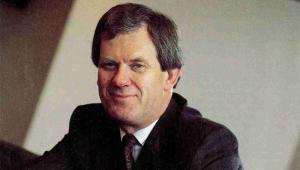Heywood, who recently took on the title Lord Heywood of Whitehall, retired from the civil service on 24 October. He had previously taken a leave of absence following a cancer diagnosis.
Prime minister Theresa May said Heywood’s death was “extremely sad news”.
“The many retirement tributes paid to Jeremy from across the political spectrum in recent weeks demonstrated his extraordinary talent supporting and advising prime ministers and ministers, and leading the civil service with distinction,” she said.
“He worked tirelessly to serve our country in the finest traditions of the civil service and he is a huge loss to British public life.”
Sir Mark Sedwill, who has succeeded Heywood as Cabinet secretary and head of the civil service, added: “Jeremy was the exemplary public servant.
“We will miss him more than we can say, and will be the poorer without his advice, leadership and extraordinary insight. He set the highest standards and challenged us to meet them.
“Jeremy was always looking to move difficult problems forward, restlessly confident to deliver a better way. He was a champion of innovation and embraced change while consolidating and protecting the best of history.”
Jill Rutter of the Institute for Government published her thoughts about Heywood in a blog on the IfG’s website. She noted that he had presided over the “renaissance of the Cabinet Office” in the coalition years and was a champion of policy innovations, such as the behavioural insights team.
Heywood became Cabinet secretary in January 2012, and took on the role of civil service head from Lord Kerslake in September 2014.
Prior to that, he was permanent secretary at Number 10 and had served as principal private secretary to the prime minister. He also worked at the Treasury as head of corporate and management change, and served as principal private secretary to chancellors Norman Lamont and Kenneth Clarke.
He began his government career as economic adviser at the Health and Safety Executive.
He leaves his wife Suzanne and their children.










